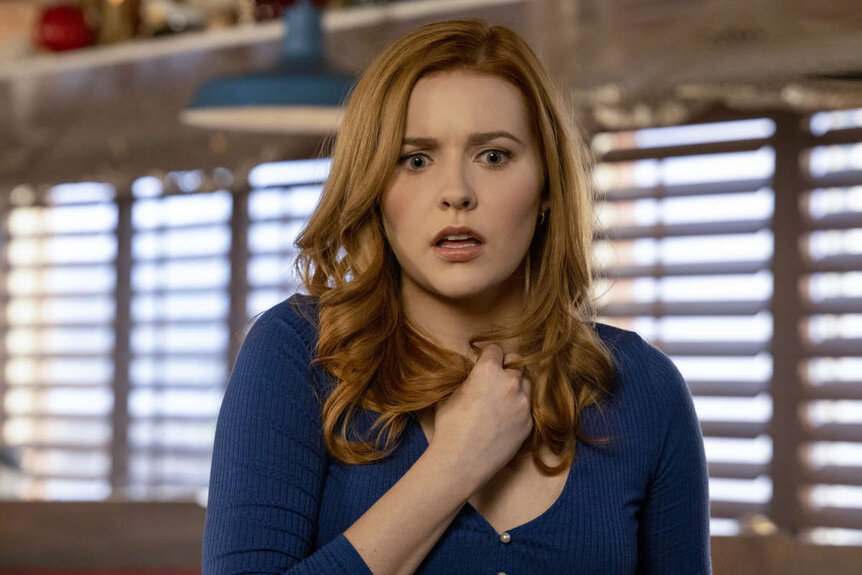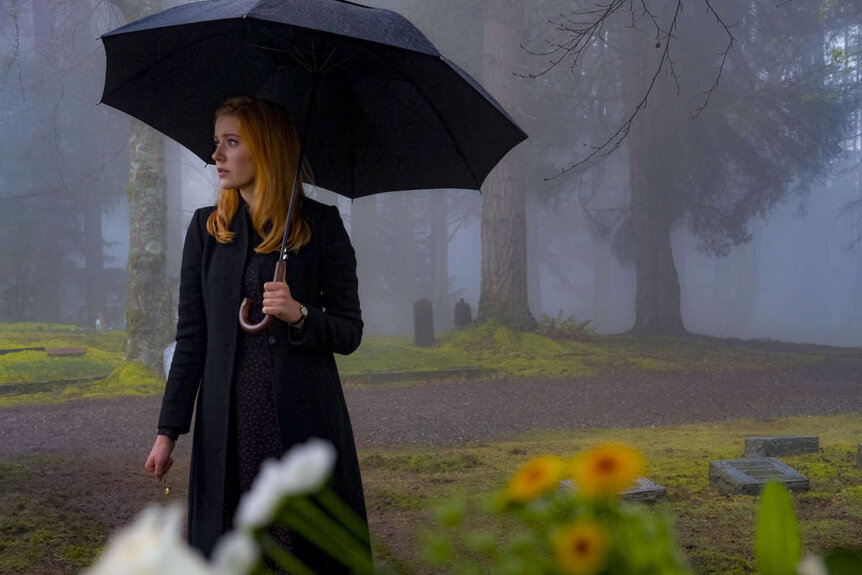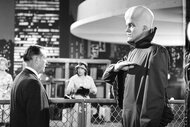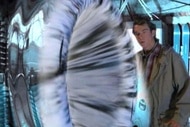Create a free profile to get unlimited access to exclusive videos, sweepstakes, and more!
How Nancy Drew's embrace of horror makes this adaptation stand out
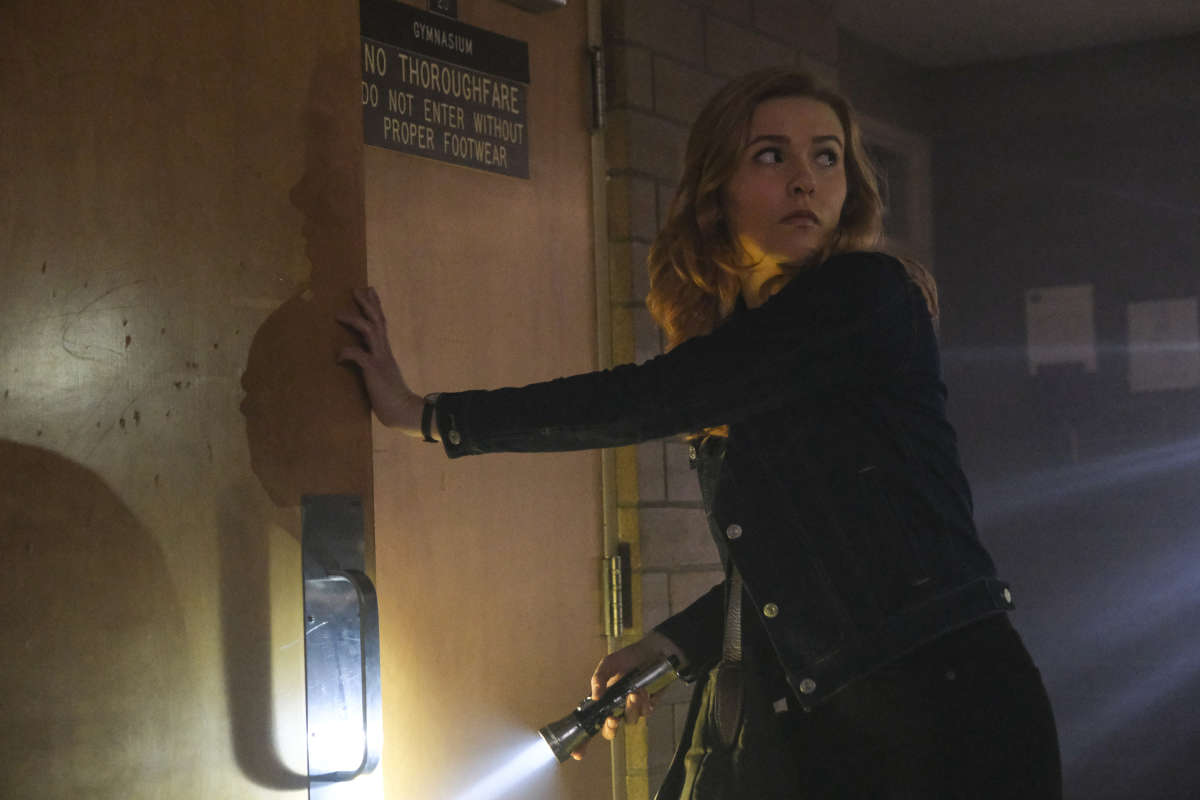
The CW's Nancy Drew is probably one of the best shows you're not watching. A dark and gutsy update of the girl detective who starred in the formative novels from many of our childhoods, this is a show that may look familiar but that is actually busy charting its own course through a television landscape chock-full of similarly gritty teen dramas.
What truly sets this series apart isn't its complicated, compelling heroine or its breakneck narrative pace, as appealing as both those elements are. No, this Nancy Drew is the rare mystery series that's not just set in a creepy, foreboding small town, but that unexpectedly and wholeheartedly embraces the most frightening and supernatural aspects of its setting — and uses them to tell intriguingly human stories.
To be fair, this probably isn't the Nancy Drew you remember from childhood. In the Carolyn Keene novels upon which this show is based, the threat of the supernatural is often present, if never truly explored. The books certainly feature their fair share of things that go bump in the night, but those frights always end up having real-world explanations — a neighbor's curious cat, an unlatched window, a greedy but all too human person out for their own ends. In this version of the tale, the question is more likely to be whether the thing that's rattling your cabinets is simply a ghost trying to communicate or some other, more vengeful sort of spirit.
In this Nancy Drew, ghosts not only exist, they regularly haunt the streets of the town of Horseshoe Bay, Maine. And the show leans full-on into the horror elements of its narrative as a result, offering a story that feels like a breath of fresh air in our current television landscape. Because while other dark teen shows like Riverdale frequently embrace well-known horror tropes and gleefully tease things like possessed dolls and evil cults, at the end of the day the Gargoyle King is still just a dude wearing antlers on his head. In Nancy Drew, the dead aren't just still with us, literally speaking, they're busy shaping the world around them for both good and ill.
From bizarre seasonal rituals and town festivals to dark folklore and community urban legends, Horseshoe Bay is a place that's soaked in the supernatural. A formative force to its residents, the fact that some of them struggle to move on from the town after their lives have ended isn't even really that weird within the world of the show. The interconnectedness of Horseshoe Bay's history, major families, and cultural institutions provides fertile narrative ground for dark storytelling, particularly when its ghosts and supernatural beings are often literally part of the dirt beneath our characters' feet. Everyday life in this place is packed with curses, ghostly reckonings, and weird traditions meant to stave off some sort of otherworldly consequence.
Horseshoe Bay itself was allegedly founded by a group of settlers who were blown off course by a storm caused by an evil sea spirit. On Harbor Day, in celebration of said founding, you can ask that spirit for a boon, and you'll know if your request was granted if you start bleeding out of your eyes. The end-of-summer Seawater Ceremony involves leaving buckets of ocean water outside your door and hoping it doesn't turn to blood — so you know you won't be marked for death in the next year.
There are demons who trade in human souls, dark spirits that possess local buildings and brutally murder the families that live there, and mythical northeasters that can blow restless spirits back into the world of the living. But no matter how many monsters or supernatural beings this show introduces, they don't exist solely to provide jump scares or showcase various elements of body horror. In Nancy Drew, the series' horror framework is always used to serve the stories of its characters, rather than to simply shock its audience.
The primary mystery of the series' first season is framed around the decades-old death of Lucy Sable, a former town Sea Queen whose mysterious fall from the town's famous bluffs gives rise to the nursery rhymes and ghost stories still used to frighten children today. But Dead Lucy's real story is one of tragedy and heartache, fueled by loneliness and loss rather than vengeance. She haunts Nancy ultimately not because she's a monster, but because she's a mother, and her death isn't a murder, but a failing on the part of the townspeople who now claim her memory.
George Fan's mother, Victoria, is ridiculed as the town drunk, a position that has left her daughter a laughingstock among many of the same kids who might otherwise have been her friends. But Victoria is also a clairvoyant, and her destructive drinking problem is a direct result of trying to escape the voices of the dead that refuse to leave her alone. A group trip to the spirit realm sheds light on Ace's backstory even as the gang brings him back from the brink of death, and the vengeful spirit currently levying a blood curse on Nancy and all her friends seems to have a deeply human connection to one of the town's most elite families.
Even as it centers its story on the mysterious murders of Lucy Sable and Tiffany Hudson, Nancy Drew pushes back against the trend of othering and mythologizing dead girls, exploring the way their real lives can be lost in their remembered stories. Lucy Sable deserved better — not just during her life, but also after her death, in which she is primarily remembered as a cautionary tale by the very same townspeople who once drove her to take her own life. (And who now display little self-awareness of that fact.) The presence of her ghost in Horseshoe Bay is about reclaiming her own narrative — and protecting her daughter — rather than punishing those deemed responsible for her death.
This Nancy Drew bears little resemblance to any onscreen adaptation of the story that has come before it. But the show is charting a new course for our sleuthing heroine by embracing the darker elements of the story that were always there, to begin with, and using them to illuminate aspects of her character we never saw before.
